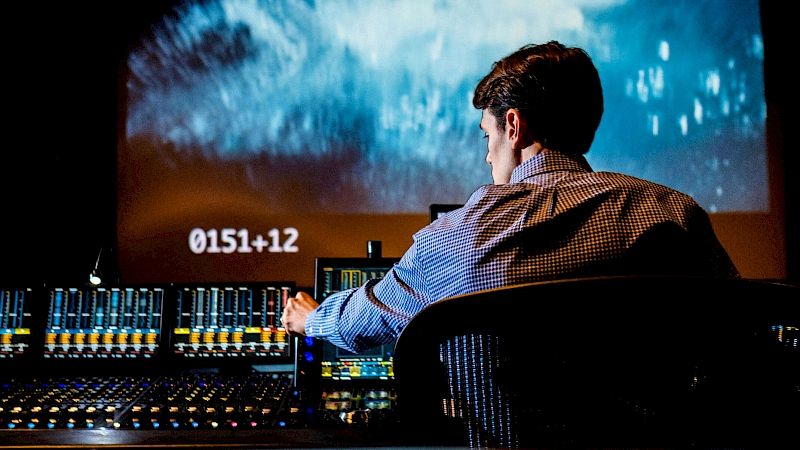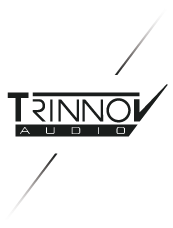
This past January, just before NAMM, we went to visit Emmy awarded sound designer Zach Seivers to talk about monitoring with the DMON and getting his new mixing room designed with the help of Vintage King certified for Dolby Atmos
Can You Tell Us A Bit About Snap Sound?
Snap sound is a boutique sound design company based in Los Angeles we basically work with a variety of filmmakers all over the world really but a lot of folks in Los Angeles and New York mostly independent films and documentary films, we’ve got a really amazing team that I work with that specializes in doing really beautiful sound design for various kinds of storytelling.
What Were The Challenges In Terms Of Acoustics At Snap Sound?
When we first built the studio about eleven years ago we were cautious to install the same monitors in all the rooms, and we built the rooms to be as close to each other as possible from a physical point of view. But quickly we ran into basic translation problems that you’re going to run into no matter what you do if you’re not tuning the rooms…
At the time I really had no idea what calibration would how that would affect the quality of the mix but one thing I did consistently run into was the sensation of feeling that the more I was doing to try to fix problems in the mix, let’s take dialogue for instance if I was trying to equalize a problem that I was hearing, it felt as though the more I tried to do to it from a mixing point of view the worse it sounded everywhere else outside the studio.
So I basically came to the conclusion that there must be something inherently wrong with the way that we were monitoring and that’s when we came across Trinnov.
What Was Your First Experience With It?
My first experience with it was actually through demoing an MC Pro and I found that it was a miraculous change. At first, I didn’t even understand what it was really truly doing and how that was affecting the sound but after I had the opportunity to mix through it a couple of times and then hear the work elsewhere I started to realize that it actually was saving me a tremendous amount of time.
Because of a lot of the things that I was doing as a mixer was compensating for problems within the room and I didn’t realize that then, so once I had the opportunity to work that way I realized that I could cut down on the amount of time I was spending trying to fix those problems inherent to my room. After that, I started working with more confidence knowing that what i was hearing in my room was finally representative of how it’s going to sound elsewhere.
Has It Affected The Way You Monitor And Mix?
The experience that I’ve had has been that I’m able to mix in this smaller room and because it’s calibrated so well and because I’m listening to my mix on monitors that are larger and more cinematic sounding I’m now able to go to a larger theatrical dub stage and hear something right off the bat that sounds very similar to what I mixed.
The choices that I make from a mixing point of view regarding dynamics equalization and color are relatively the same because the room is now properly calibrated. For me, it’s really amazing because you can work in a smaller room and then show up in a large room and hit play, and it basically sounds like what you mixed. With The D-MON In Place, How Was The Process Of Getting Your Room Certified For Atmos By Dolby?
With The D-MON In Place, How Was The Process Of Getting Your Room Certified For Atmos By Dolby?
I basically connected everything and ran through the same sort of basic procedures that I did when I was setting up the D-MON a few years ago in our 5.1 rooms, ran a generic calibration and right off the bat had something that was very close to what I wanted it to sound like!
When Dolby came in they brought in their calibration equipment to measure what the room was actually doing and then gave me recommendations as to how we could further, improve the sound beyond what I had done myself with the original calibration.
The kinds of changes that we made were from a half a dB to two dB in certain specific frequencies relative to their standards, basically we tweaked the target curve to handle that and it was a fairly simple process
I think it the whole process took about two hours from the moment that they set up their microphones to the moment that we had a great sounding system that met the measurement expectations that they had in mind, overall, it was really about two or three hours at most which is kind of amazing if you ask me.
Looking Back At It Now, Do You Think It Was A Worthwhile Investment?
For me, It was undoubtedly the most remarkable investment we could make at the time, the return on it was beyond anything I could possibly imagine, I mean it basically changed the quality of our work in a fundamental way, overall, it’s nice to be able to spend less time worrying about problems and more time just enjoying the work of mixing, just appreciating it and being able enjoying listening because what you’re listening to is really a beautifully natural sound.

